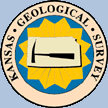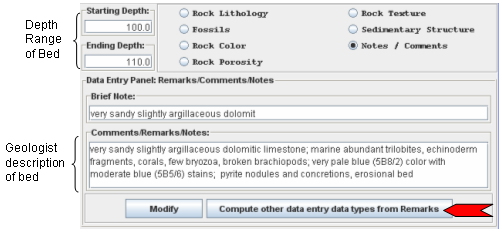

|
HELP: Remarks - Parse Sedimentary Structures from Text |
 |
The best way to enter the other rock image data is to enter your
description of the bed in the Remarks / Notes / Comments Data Entry
Dialog and build a list of bed descriptions and then select the "
Compute other data entry data types from Remarks" button. This will allow the program to automatically use the geological description lookup xml files to parse your text into the rock image tracks. This basically saves time and effort, instead of entering each track separately. |
||||
A Sedimentary Structures example
"very sandy slightly argillaceous dolomitic limestone; marine
abundant trilobites, echinoderm fragments, corals, few bryozoa, broken
brachiopods; very pale blue (5B8/2) color with moderate blue (5B5/6)
stains; pyrite nodules and concretions, erosional bed".
The phrase "pyrite nodules and concretions, erosional bed" will be
parsed into sedimentary structure images. The Parse engine will allow up
to 15 sedimentary structure types in the profile plot. The Sedimentary
Structure XML lookup file is set up on keywords a primary and secondary.
This was done so certain combination of words will trigger a recognition
of a phrase as a sedimentary structure without having to have the
complete exact phrase.
With this example,
|
|||||
A list of Sedimentary Structure Symbols are stored in a Sedimentary Structures XML lookup file and illustrated as follows, Sedimentary Structure Symbols there are a number of sources for sedimentary structure symbols, but for this program the bulk of the symbols use the Shell Oil's 1995 Legend1.
References:
(1) STANDARD LEGEND 1995 SHELL INTERNATIONAL EXPLORATION AND PRODUCTION B.V., THE HAGUE
Author: John R. Victorine jvictor@kgs.ku.edu